In the Category photography
timelapse photo of a facebook photo album
Posted September 20th, 2010 at 11:13 am. There are 0 comments.
a more open place by Phillip Maisel
graffyard is visual embed tags for the city
Posted May 18th, 2010 at 11:57 am. There are 0 comments.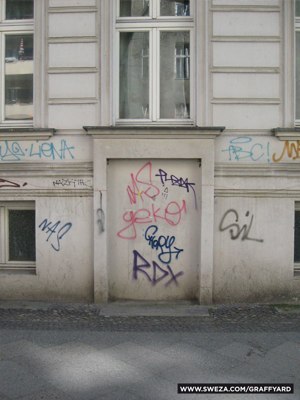

graffyard makes past graffiti made visible after it has been cleaned up.
It’s a nice example of encoding the visual history of the city onto itself. One can imagine a future where city walls have a secondary digital presence and all advertising, graffiti and signage takes place via a persistent visual augmented reality system. The city becomes a contiguous blank canvas, a physical platform encoded with embed tags for the reality we want to see. Maybe.
jan dibbets
Posted May 18th, 2010 at 10:54 am. There are 0 comments.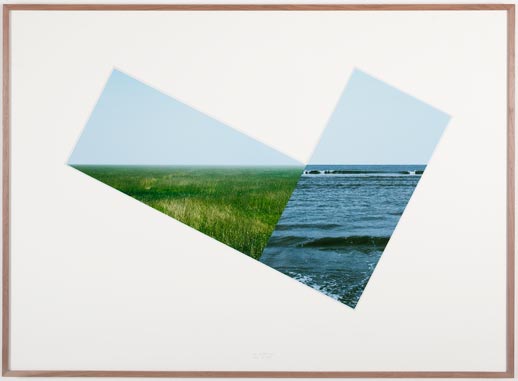
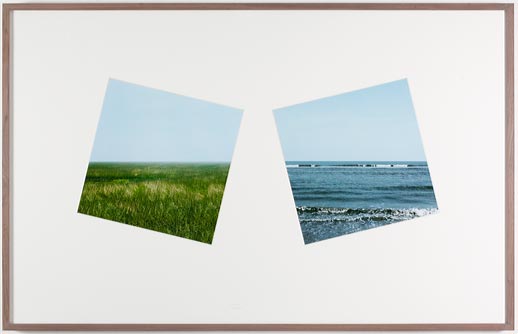
In the vein of recent art exhibitions I did not see one of my favorite artists Jan Dibbets, the conceptual photographer that held a large influence on me during my last two years in architecture school had a recent exhibition at the Gladstone Gallery. His obsession with the horizon is still unwavering, and collision of perspective and flatness still hold strong,
found functions
Posted February 23rd, 2010 at 2:04 pm. There are 0 comments.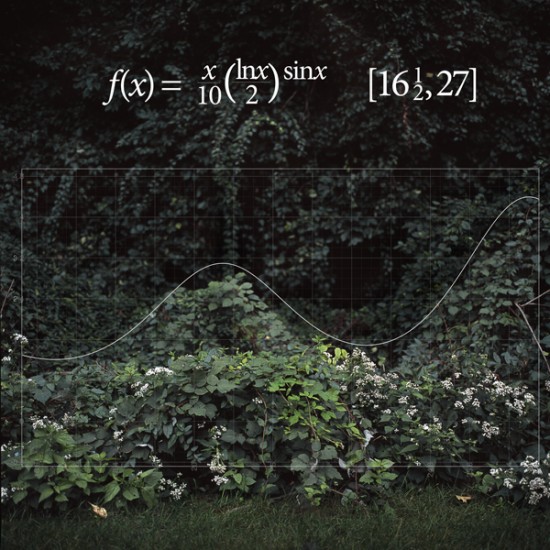
Photographer and Mathematician Nikki Graziano photographs math found in nature
pixels
Posted January 14th, 2010 at 11:05 am. There are 0 comments.![]()
Artist Jörg M. Colberg creates images that are compressed with a customized jpeg compression scheme.
ajpegis a new image compression algorithm where the focus is not on making its compression efficient but, rather, on making its result interesting.
ajpeg is intended to go the opposite way: Instead of creating an image artificially with the intent of making it look as photo-realistic as possible, it takes an image captured from life and transforms it into something that looks real and not real at the same time.
james hopkins
Posted November 5th, 2009 at 11:04 am. There are 0 comments.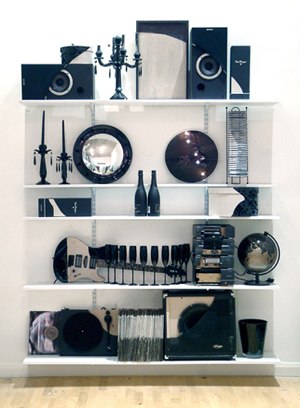

Seriously awesome work by James Hopkins. Be sure to checkout the Balanced Works on his website.
Francisco Infante-Arana
Posted June 22nd, 2009 at 2:49 pm. There are 0 comments.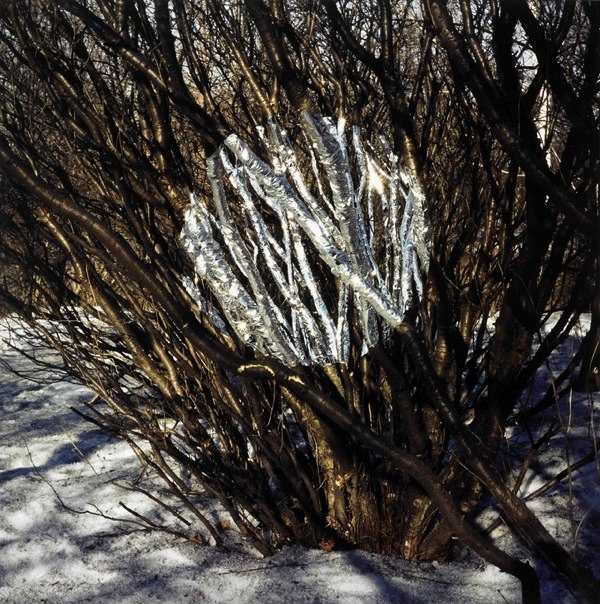
Aluminium foil on trees by Francisco Infante-Arana
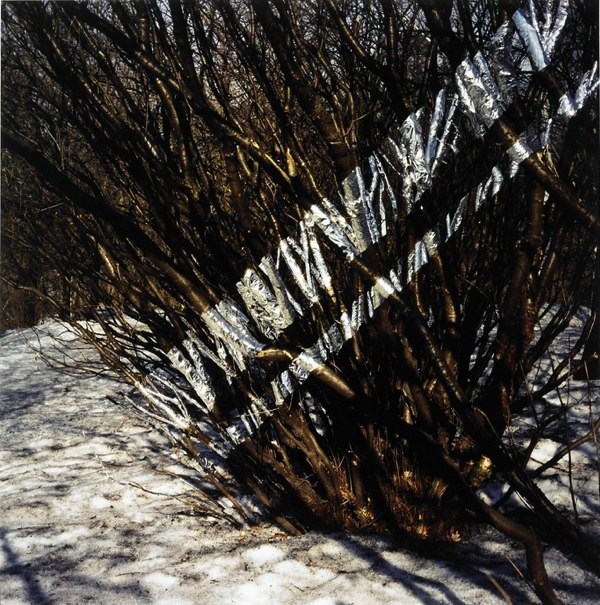
In a similar vein, Jan Imberi
is this your luggage?
Posted May 10th, 2009 at 4:15 pm. There are 0 comments.
WHEN A BAG GETS LOST THE AIRPORT OR AIRLINE WILL STORE IT FOR A WHILE AND TRY TO FIND THE OWNER.
IF THEY CAN’T IDENTIFY THE OWNER OF THE CASE THEY SEND IT TO BE AUCTIONED OFF WITH THE PROFIT GOING TO CHARITY.
I GO TO THESE AUCTIONS AND BUY THE CASES SO I CAN PHOTOGRAPH THEM FOR MY WEIRD VOYEURISTIC PASSION.
THE REASON FOR THE WEB SITE? I WOULD REALLY LIKE TO TRY TO FIND THE PEOPLE WHO OWN MY SUITCASES, SO IF YOU HAVE ANY FRIENDS WHO HAVE LOST A CASE PLEASE GET THEM TO HAVE A LOOK.
On the Grid
Posted April 30th, 2009 at 7:17 pm. There are 2 comments.
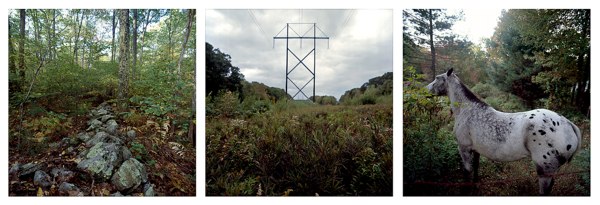
On the Grid is a project documenting the space created by the vast nationwide network of powerlines and the land underneath them. Undeveloped except for the powerlines them selves they carve through the landscape, connected the most rural with the most urban. The shared space, buzzing with the hum of excess electricity, is at times a pristine and beautiful meadow surrounded by forest and others, the uninhabitable tract amongst suburban banality, beautiful in its own right.
On the Grid, a project by Adam Ryder and Brian Rosa, explores the landscape immediately surrounding high-tension electric transmission lines in Rhode Island. Starting near the Ocean State Power facility in Burnllville, Ryder and Rosa spent several days walking along various sites of this arterial infrastructure. Sites were chosen though surveying publicly available aerial photographs and land use maps, and all photos were geotagged with handheld GPS units. In combining the rigid technical process of digital mapping with the subjective practice of landscape photography, this project explores the state as a collection of differentiated spaces that, though seemingly isolated, are networked.
The resulting photographs showcase the topographical diversity surrounding these structures, whose own narrow terrain remains virtually unchanged throughout their straight, incisive paths. The path of the power lines functions as a rural to urban transect, cutting through farmland and commercial parks, cul-de-sacs and strip malls, used car lots and interstate highways.
As human intervention in the natural landscape sprawls to the most remote areas of the state, our lived space becomes increasingly regulated and our encounters with equivocal territories are especially rare. In more urbanized areas, we lose our relation to places which seem to exist unto themselves, where one can feel alone and unhindered. The ambiguity of the land occupied by high-tension power offers the possibility of experience outside of regulation. Despite being part of an infrastructure that is highly regulated and bureaucratized, the physical space inhabited by these power lines remains easily accessible though its sheer ubiquity. Thus, paradoxically, the realm of power lines seems to exist not only outside of regulation, but also outside of the normative properties of the native landscape. Whereas an area half of a mile away from a high tension line may be densely wooded, the space occupied by the wires will be clear-cut, devoid of trees and exhibiting, at most, low shrubbery and grass. The uniformity of this narrow swath as it cuts through the landscape reveals as much about its own spatial utility as it does of the landscape it bifurcates across the state (and beyond). It is this topographical sameness that makes the power lines amazing sites of contrast against both development and the natural landscape.
On the Grid invites reflection on the blurred relationship between networked technology, the built environment and nature through these buzzing monoliths.
– Website Text (An image on the original website)
They did a nice interview on the NPR show Living on Earth (mp3 link).
Quoting here,
Yeah absolutely, it’s a really unique tract of land that doesn’t have any development on it except for itself. So, it’s kind of, in a way its really pristine and untouched and…virginal, its kind of, kind of like, romantic and magical in that way.
-Adam Ryder
and
What’s really – I think actually awesome, is the best word I can use to say it – what’s really awesome about seeing this parade of power lines through the landscape, especially in rural areas is that we’re kind of seeing these, these tendrils connecting humanity as one large organism and it’s a cool way of looking at us, you know what I mean?
-Adam Ryder
Locate powerline grid infrastructure near you via this previous post
landings
Posted March 27th, 2009 at 9:17 am. There are 0 comments.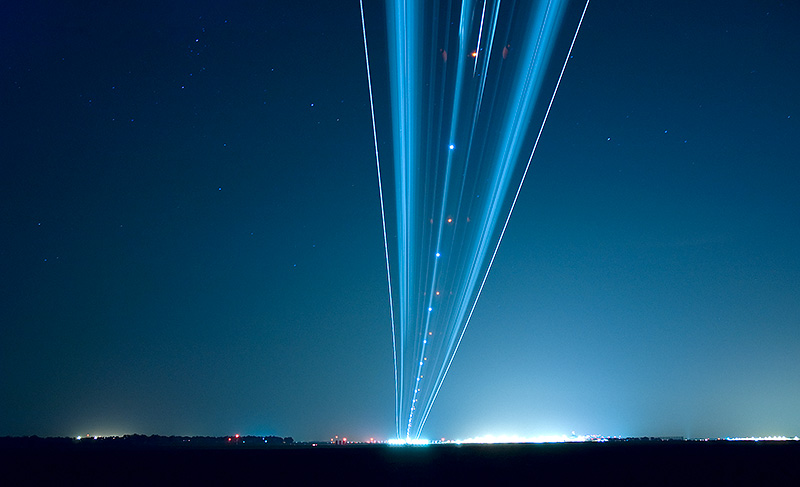
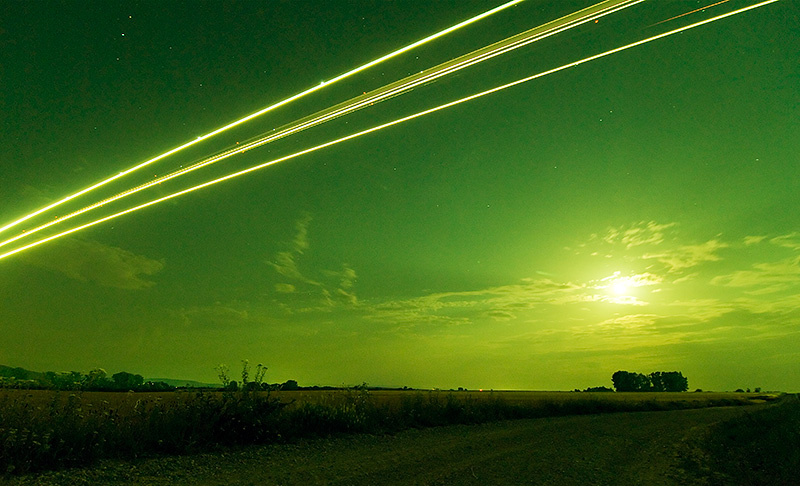
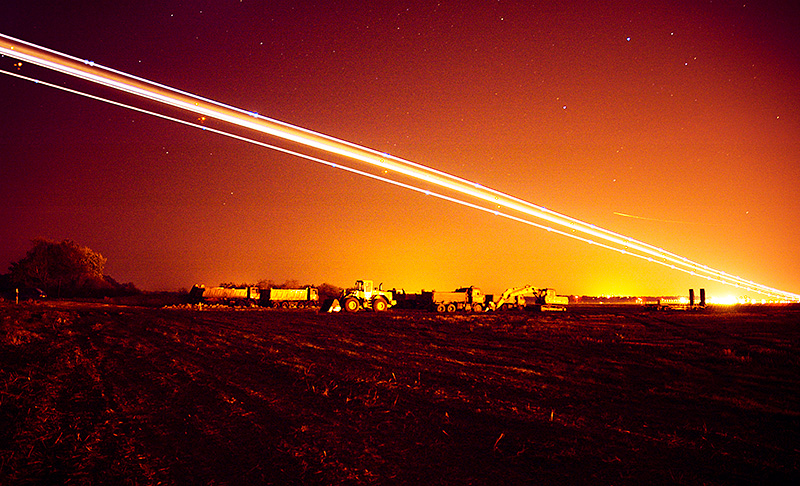
Fantastic long exposures of airplane landings by Branislav Kropilak
[ iamtheweather powered by Wordpress And is definitely Not Plastic Bag ]